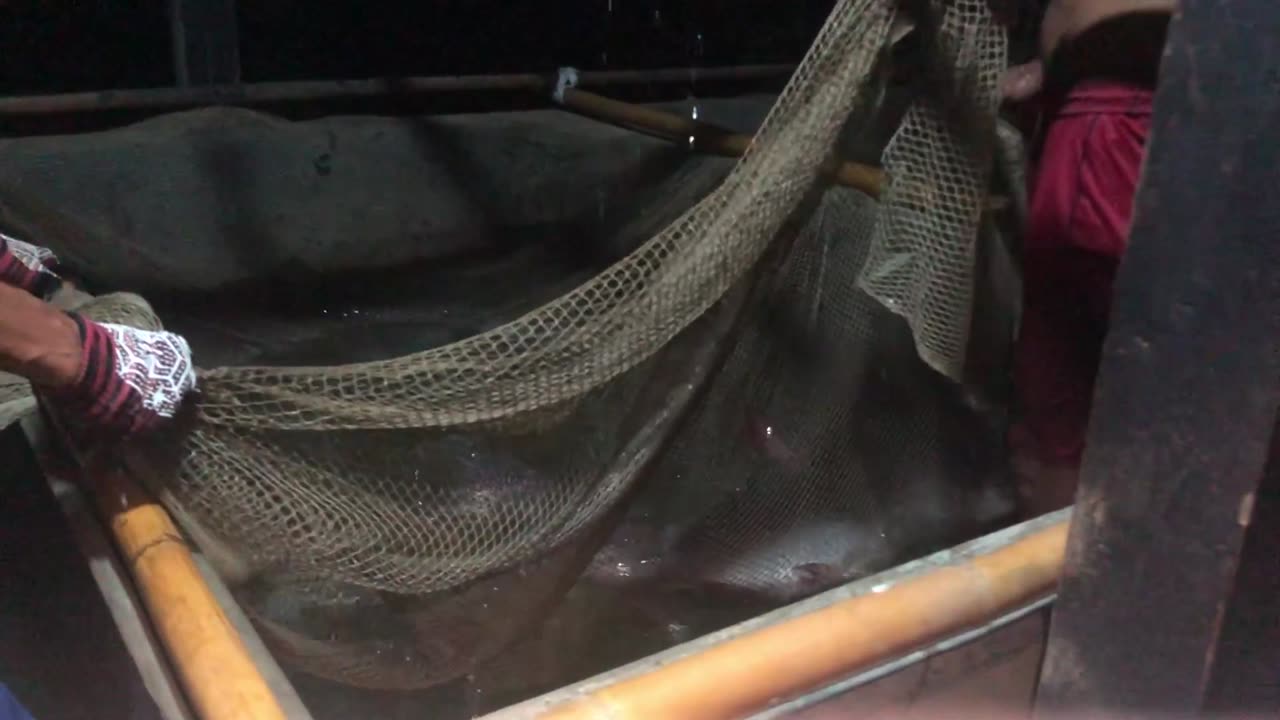Premium Only Content

Induced breeding of the Rohu fish (Labeo rohita)
Induced breeding of the Rohu fish (Labeo rohita) is a technique used to stimulate the fish to spawn in captivity under controlled conditions. Carp fish such as Rohu are commonly bred using this method to produce a large number of fry (baby fish) for aquaculture purposes. Here's an overview of the process:
Selection of broodstock: Healthy and mature Rohu fish are selected as broodstock based on their size, age, and overall condition. The ratio of males to females should be around 1:1.
Conditioning: The selected broodstock is then conditioned by providing them with a nutritionally rich diet, typically consisting of live or frozen food, such as bloodworms, daphnia, or commercial fish feeds. Conditioning helps prepare the fish for spawning and increases their reproductive activity.
Environmental manipulation: Various environmental factors are manipulated to simulate the natural spawning conditions for the fish. These factors include temperature, photoperiod (duration of light exposure), and water quality parameters such as pH and dissolved oxygen levels.
Hormonal stimulation: Hormones are often used to induce spawning in carp fish. Commonly used hormones include synthetic analogs of luteinizing hormone-releasing hormone (LHRH), such as Ovaprim or Ovaplant. These hormones are injected into the fish to trigger the release of eggs from the females and the milt (sperm) from the males.
Spawning and fertilization: Once the broodstock has been hormonally induced, they are transferred to specially prepared spawning tanks or ponds. The fish usually spawn within a few hours after hormonal injection. The eggs released by the females are fertilized externally by the milt provided by the males.
Egg incubation: After fertilization, the eggs are carefully collected and transferred to incubation tanks or trays. These tanks are equipped with suitable water circulation and aeration systems to ensure proper oxygenation. The eggs typically hatch within 24 to 48 hours, depending on the water temperature.
Fry rearing: After hatching, the fry (baby fish) are very delicate and require appropriate conditions for growth. They are usually reared in separate tanks or nursery ponds with controlled water parameters and provided with suitable feed, often in the form of powdered or liquid diets specially formulated for the early stages of fish development.
It's important to note that induced breeding techniques can vary depending on local practices, available resources, and the specific requirements of the fish species. It's always recommended to consult with local fisheries or aquaculture experts for detailed guidance and assistance when attempting induced breeding of any fish species.
#fish #fishfry #fishinducedbreeding #fishfarming #fishproduction
-
 1:42:14
1:42:14
TheDozenPodcast
17 hours agoConor McGregor, Raoul Moat, Burglary, BKFC Heavyweight Champion: Mick Terrill
78.9K3 -
 2:10:02
2:10:02
vivafrei
20 hours agoEp. 241: Stephanopoulos PAYS for Defamation! Accused CEO Shooter Gets ELITE Attorney! Drone Madness
202K171 -
 6:05:13
6:05:13
Right Side Broadcasting Network
6 days agoLIVE REPLAY: NYYRC 112th Annual Gala Ft. Steve Bannon, Nigel Farage, and Dan Scavino - 12/15/24
248K18 -
 1:22:45
1:22:45
Josh Pate's College Football Show
15 hours ago $5.26 earnedCFP First Round Predictions | Travis Hunter Heisman | Transfer Portal Intel | Biggest Misses In 2024
50.9K -
 LIVE
LIVE
Vigilant News Network
15 hours agoTsunami of Devastating News Crashes Down on COVID Vaccines | Media Blackout
1,366 watching -
 5:07:03
5:07:03
SLS - Street League Skateboarding
5 days ago2024 SLS Super Crown São Paulo: Men's & Women's FINAL
1.46M125 -
 32:51
32:51
The Why Files
21 days agoCryptids 2: Electric Boogaloo. Four creatures following the same electromagnetic pattern.
171K160 -
 25:04
25:04
CoachTY
2 days ago $20.08 earnedHOW TO DO YOUR OWN RESEARCH IN CRYPTO
111K25 -
 1:30:04
1:30:04
Steve-O's Wild Ride! Podcast
3 days ago $12.57 earnedHardy Is Taking Over Country Music - Wild Ride #246
114K6 -
![🔴LIVE-MARVEL RIVALS [1ST LOOK]❗ #MGGA #RUMBLEGAMING #RUMBLETAKEOVER](https://1a-1791.com/video/s8/1/f/N/y/K/fNyKv.0kob-small-LIVE-MARVEL-RIVALS-1ST-LOOK.jpg) 4:39:53
4:39:53
Fragniac
1 day ago🔴LIVE-MARVEL RIVALS [1ST LOOK]❗ #MGGA #RUMBLEGAMING #RUMBLETAKEOVER
61.5K7